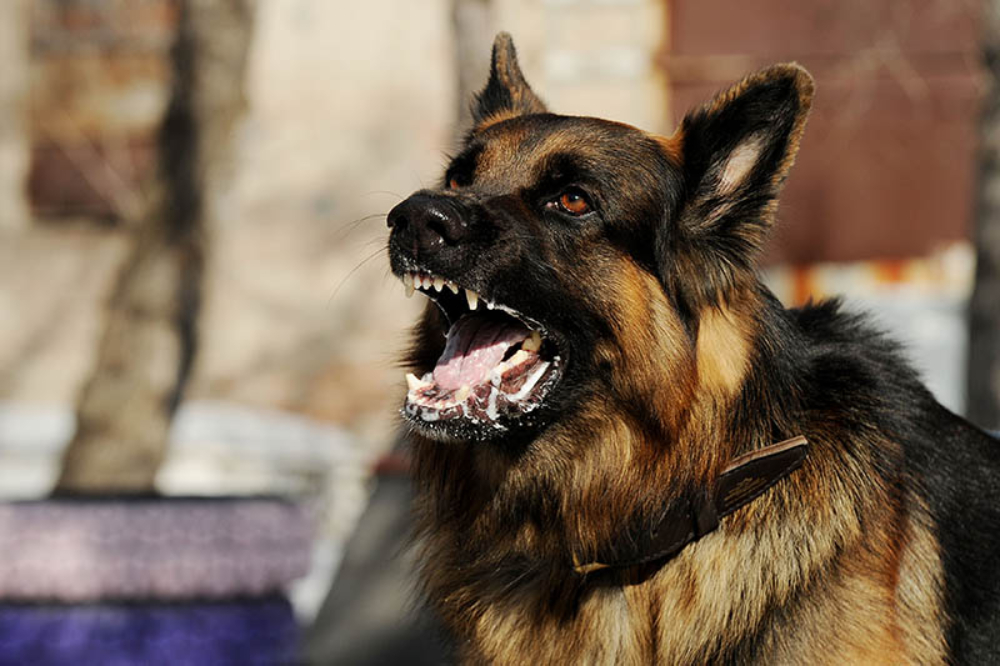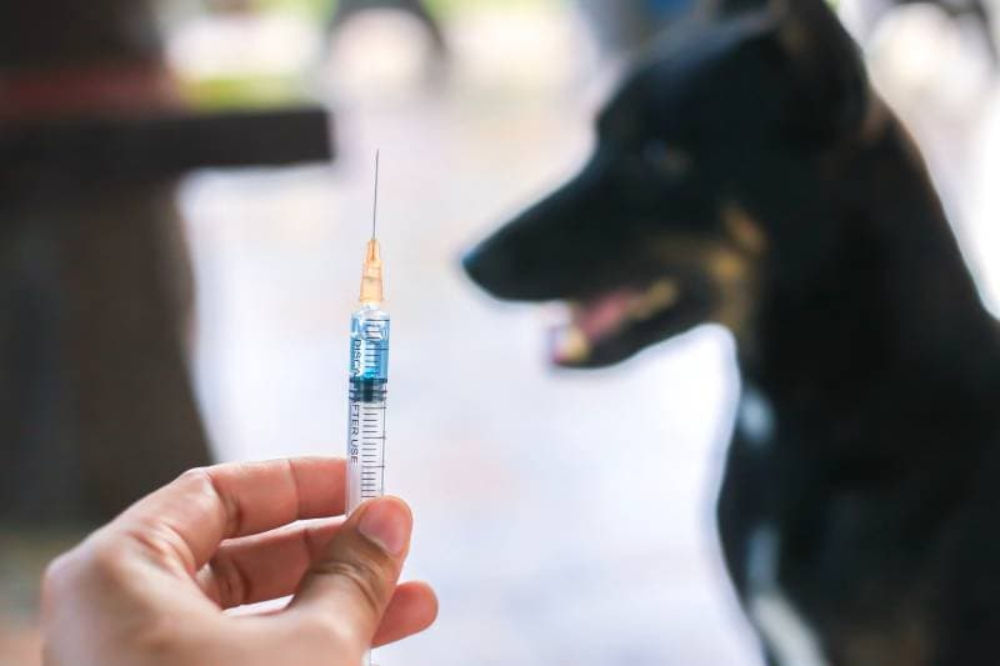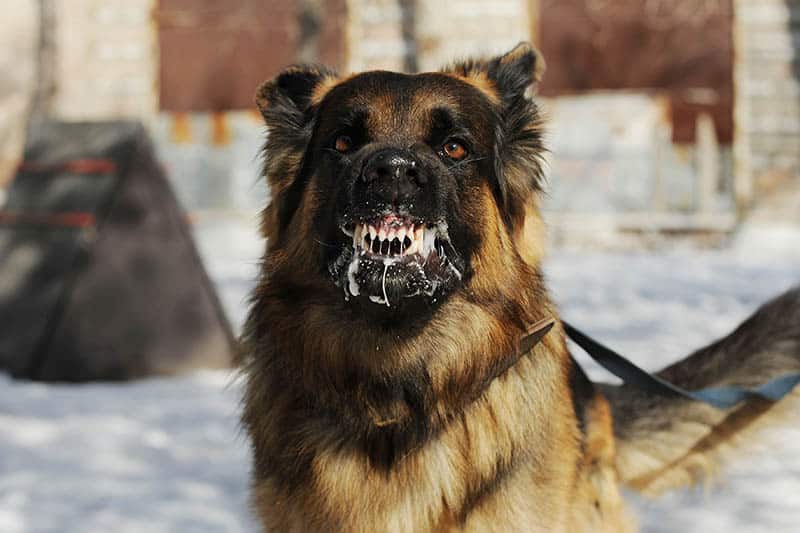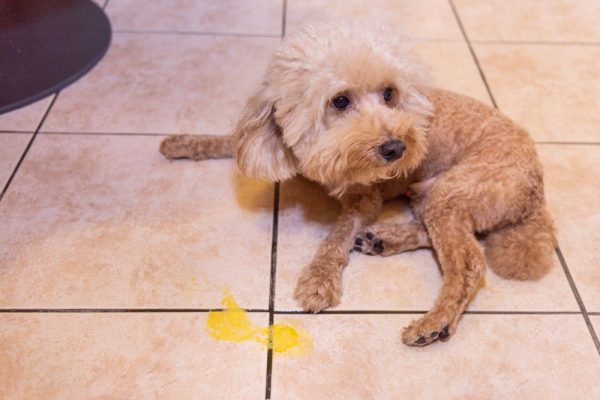In this article
View 5 More +The rabies vaccination is recommended, if not required, for canines in many countries worldwide. It is designed to protect them from a disease many of us have heard of but have no experience with. If you’re like most dog owners, you want to know how dogs can get rabies to ensure that you’re properly protecting your beloved pet.
The most common transmission method is a bite from an infected animal, though that’s not the only way. Only 10% of rabies cases in the US occur in domestic animals such as dogs and cats, and this is due to widespread vaccination. However, it is still essential to understand how the disease works and how it is transmitted. Here’s everything that you should know.

What Exactly Is Rabies?
Rabies is a life-threatening virus that attacks the body’s central nervous system (spinal cord and brain). It’s not discriminative and can be transmitted between all mammals, including humans. While the virus is found in many parts of the world, a few places are considered rabies-free, including Sweden, Fiji, Iceland, Japan, and Hawaii. Rabies is not treatable in dogs, and a dog suspected of having rabies is likely to be euthanized by a veterinarian.
If a dog has been exposed and is presented to a veterinarian before the onset of any signs, it may be given a post-bite vaccination to prevent the virus from reaching the central nervous system. Testing for rabies is no small feat, as the brain has to be tested, so this can only be done post-mortem. Therefore, prevention in the form of vaccinations and keeping pets away from wild and stray animals is the best form of protection from rabies.

How Is Rabies Transmitted to Dogs?
The rabies virus is present in saliva, so if an infected animal’s saliva enters a healthy dog’s bloodstream, the dog can quickly become infected. That is why being bitten by a rabies-infected animal is cause for alarm, as the bite likely breaks the skin, enabling the virus to gain easy access to the victim’s bloodstream. However, a bite is not necessary for rabies transmission to occur.
If a dog has an open wound and comes into contact with a rabies-infected animal’s saliva in any way, they could catch the virus. It is common for dogs to contract rabies from wild animals that are not vaccinated against the virus, such as raccoons, squirrels, bats, and foxes. However, stray dogs are a significant source of rabies transmission in certain parts of the world (including various Asian countries).
What Are the Signs of Rabies?
There are a few signs of rabies to look for in dogs suspected to have been exposed to the virus. Rabies develops in stages after transmission, so the signs might not appear until the virus has invaded the nervous system. It can take anywhere from a few days to several months for signs to develop, depending on how quickly the disease progresses in the nervous system.
- Changes in Behavior — Outgoing dogs suddenly become sedentary, while shy dogs might become excitable.
- Aggression — The virus causes dogs to become more aggressive and lose fear, increasing the chance that the dog will bite and the virus will get passed on.
- Muscle Paralysis — As the nervous system deteriorates, muscle paralysis can set in, which makes it hard for a rabies-infected dog to swallow or breathe.
- Excessive Drooling — This is sometimes accompanied by foaming at the mouth, which is one of the most well-known signs of rabies.
- Seizures — They can take place due to infection of the nervous system.
Since treatment is ineffective once the nervous system is damaged enough to create signs, if you think your dog has been exposed to the virus, don’t wait for any signs to appear before consulting your veterinarian.
How Is Rabies Diagnosed?
Rabies cannot be diagnosed in any reliable fashion without an autopsy of the brain. Therefore, there is no real way to know if a living dog has contracted rabies until they develop signs, at which time, a few assumptions can be made. If death occurs, an autopsy can be done to confirm the diagnosis.
How Is Rabies Treated?
If there is even a remote possibility that a dog (vaccinated or unvaccinated) has been exposed to the rabies virus, a veterinarian can administer a vaccine booster to minimize the risk of disease development. The dog would then need to be placed in strict quarantine to see whether signs develop.
It doesn’t always work, but it gives the dog a better chance of survival. There are currently no known medications that can kill the rabies virus once it has reached the central nervous system, and by that point, it is always fatal. Prevention is the best way to ensure that a dog does not end up succumbing to rabies.

How Is Rabies Prevented?
There are only a few ways to prevent the transmission of rabies, the first of which is making sure your pup is up to date on their rabies vaccination. In some places, allowing a dog’s rabies vaccination schedule to lapse is illegal for the safety and protection of the community at large. Not only do rabies vaccinations protect your pup from a life-threatening disease, but they also protect against liability.
If your dog bites another animal or a person and is not current on their vaccinations, they may be seized for quarantine and observed for any signs of illness for 10 days. Even if everything goes as planned and your dog is released, you’ll be spending a great deal of time and money that could have been saved by simply keeping your dog’s vaccinations up to date.
Keep in mind that rabies vaccinations do not offer 100% protection from the development of the virus, but they are the best protection option currently in existence. Another way to protect your dog from exposure to rabies is to make sure they have no contact with wild animals. Never allow them to approach stray dogs, and keep them on a leash whenever you’re out in the open so they don’t chase after animals and risk being bitten.

A Quick Recap
Rabies is a fatal disease transmitted through infected mammals’ saliva. Luckily, vaccinations provide protection, but the only surefire way to ensure your dog doesn’t get the virus is to eliminate the risk that they’ll come into contact with stray or wild animals. You’ll need to consult a trusted veterinarian immediately for rabies protection and assistance if you think your dog has been exposed to the virus.
Featured Image Credit: Victoria Antonova, Shutterstock



















